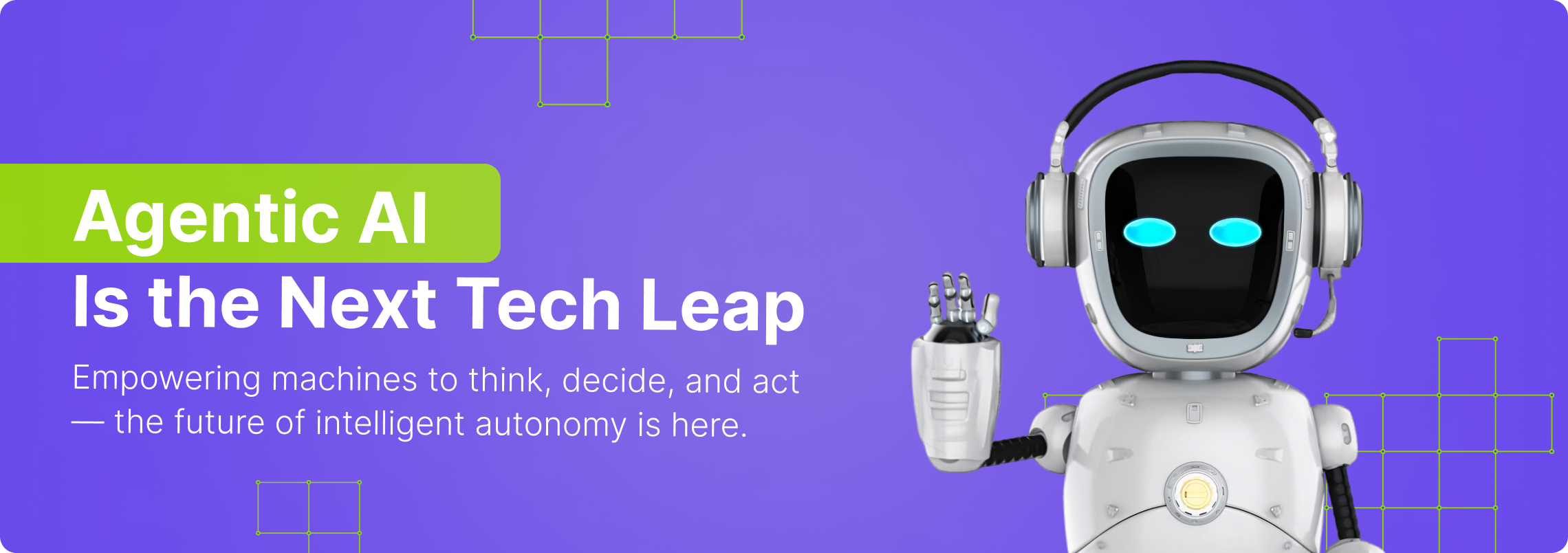- Written by: Nora James
- August 7, 2025
- Categories: AI Agents
The term “agentic AI” basically refers to AI systems that are made to function with a high level of autonomy. These systems are more than just passive instruments that await orders. They act more like agents, which are beings with the capacity for initiative, decision-making, and interaction with their surroundings.
Agentic AI is capable of:
- Establishing and prioritizing goals.
- Arrange actions in multiple steps.
- Respond and adjust to the new information.
- Gain knowledge from both achievements and errors.
- Work in circumstances that are unpredictable and complex.
This change brings AI’s decision-making and problem-solving abilities closer to those of humans.
The differences between traditional AI and agentic AI
Traditional AI models, such as image classifiers, recommendation engines, and chatbots, carry out particular tasks. They excel within tight boundaries but struggle when confronted with new obstacles outside of their programming.
Alternatively, agentic AI:
- Broader capabilities: It doesn’t require retraining to do a variety of activities.
- Proactive: It looks for information and acts upon it rather than waiting for user input.
- Adaptable: Just like a human, it modifies its plans in response to changing circumstances.
Comparing a personal assistant (Agentic AI), which not only solves math problems but also plans meetings, reschedules appointments, and gradually learns your preferences, to a calculator (traditional AI) is an excellent illustration.
How does agentic AI work?
Agentic AI follows a simple four-step process to solve problems:
Perceive:
First, the AI collects and processes data from different sources. These might include sensors, databases, or digital platforms. It extracts useful information, spots objects, and identifies important details in its environment.
Reason:
Next, a large language model steps in to manage the process. It understands tasks, creates solutions, and directs other specialized models. These could be models for writing content, processing images, or making recommendations. It often uses methods like retrieval-augmented generation (RAG) to pull in trusted data and give more accurate answers.
Act:
Once it has a plan, the AI takes action. It connects to tools and software using APIs (application programming interfaces) to get things done. Developers can add safety measures to make sure tasks are completed properly. For instance, a customer service AI might process small claims on its own but flag bigger ones for human review.
Learn:
Finally, the AI learns from its experiences. It uses a feedback loop, often called a “data flywheel,” to improve itself. Every interaction makes the system smarter, helping businesses make better decisions and run more efficiently over time.
Industries Agentic AI used in
The way industries operate is rapidly changing due to agentic AI, particularly in high-pressure, fast-paced settings. Unlike previous AI systems, it does more than simply follow rules. Rather, it decides for itself based on current information and evolving circumstances. Because of this, it’s appearing everywhere, from intelligent customer service to self-driving cars.
Transportation
Imagine autonomous vehicles. They are among the most well-known applications of artificial intelligence. These cars do more than simply travel predetermined routes. Using sensors like cameras, radar, and LiDAR, they are able to “see” the road and react quickly to weather, pedestrians, and traffic. They adjust in real-time if something changes, such as an abrupt stop in front of them.
Intelligent decision-making like this lowers accident rates and makes roadways safer. The market for autonomous vehicles is expanding in large part because of this.
By 2030, its estimated value will have increased to around $615 billion from $105 billion in 2022.
Healthcare
Agentic AI assists physicians in hospitals and clinics with difficult duties and decision-making. It looks for patterns in vast amounts of medical data, including lab results and patient histories, that even seasoned medical professionals would overlook.
Surgery also makes use of it. AI-powered robotic systems can help or even carry out delicate tasks. They can move with great precision and never grow weary or unsteady. AI-assisted technologies, for instance, are assisting in orthopedic treatments, eye surgery, and cancer diagnosis.
AI achieved 92.5% accuracy in certain health risk evaluations, according to one study. In terms of early diagnosis and treatment planning, that is revolutionary.
Finance
Agentic AI keeps up with the rapid pace of finance. Everything from credit risk analysis to stock trading uses it. These algorithms are significantly faster than humans at scanning financial data, news, and international markets in real-time.
They assist investors in controlling risk and making wiser choices. Fraud detection is another area in which agentic AI is heavily involved. This AI learns from novel forms of fraud and adjusts on the go, in contrast to outdated systems that depend on set rules.
Because of this, the fintech AI market is currently valued at over $42 billion and is expanding quickly. AI-powered solutions are being used by banks, insurance providers, and even individual investors to increase security, expedite services, and identify new opportunities.
Production and supply chain
Agentic AI excels in supply chains and factories, which depend on efficiency. It aids in equipment monitoring and failure prediction in production. This saves money and lessens downtime.
Additionally, it facilitates workflow adjustments in response to real-time demand, increasing production flexibility and speed. Actually, AI is already being applied to diagnostics, inventory management, and quality control. In 2020, 59% of AI use cases in manufacturing were related to quality control.
Agentic AI predicts demand, optimizes inventory levels, and speeds up delivery in supply chains. AI can rapidly recommend the best course of action in the event of disruptions, such as a supplier problem or a shipment delay.
Logistics
Agentic AI is helping to connect the many moving components that make up the logistics sector. The value of AI in logistics was close to $18 billion in 2024. In the upcoming years, it is anticipated to grow even more.
Smart routing, which selects the most efficient delivery routes depending on factors like traffic, weather, or fuel prices, is made possible by AI technologies. Additionally, they enable real-time shipment monitoring, which helps businesses and consumers track the precise location of their belongings.
Agentic AI manages autonomous robots that refill shelves, transfer merchandise, and sort parcels inside warehouses. This reduces human mistakes and speeds up and lowers the cost of operations.
Customer support
The majority of us have previously dealt with AI in customer care through chatbots, virtual assistants, or automated phone systems. However, agentic AI goes beyond that.
It has the ability to comprehend difficult queries, recall previous exchanges, and modify its answers to suit the requirements of each client. Based on a customer’s behavior, it can even anticipate their next question.
Among the most popular applications of AI in contact centers in 2024 were voice authentication and process automation. However, businesses are now turning to agentic AI for more in-depth discussions rather than only prompt responses
Wrapping up
The ability of agentic AI to think, adapt, and learn like a human is already revolutionizing industries; it is not just hype. It is changing the way we work and live in a number of areas, including healthcare, finance, and logistics. Agentic AI is at the forefront of the future.
Let's Build your business's AI Agent Today!
Contact us today to discover how our custom Agentic AI solutions can drive growth and efficiency for your company.


